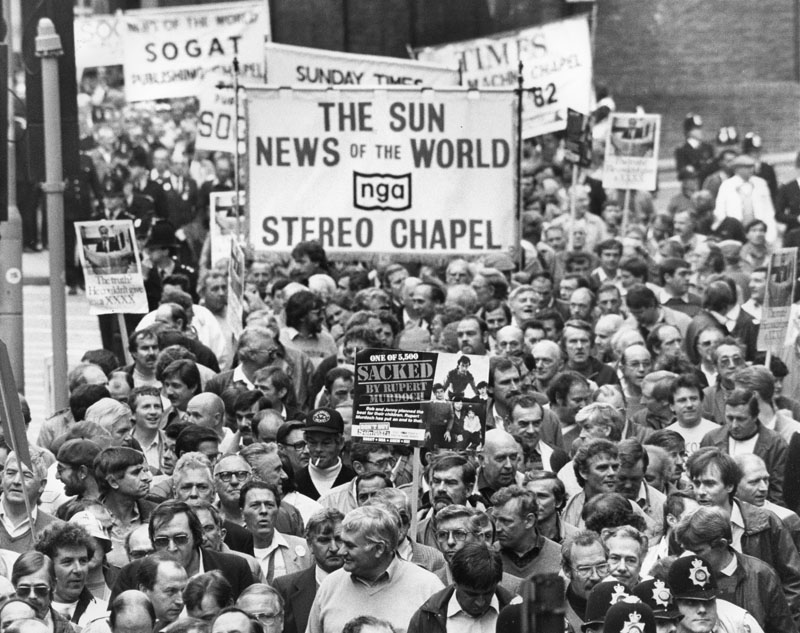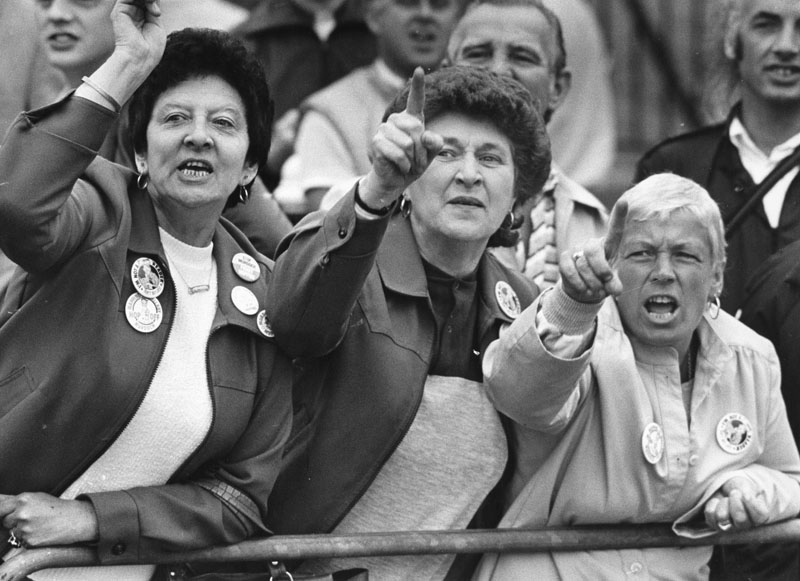Standing up to Murdoch
The printworkers are back in Fleet Street – but only until Friday. So there is still a chance to catch News International Wapping Dispute at St Bride’s Institute, just off the historic former home of many British newspapers.
It’s a must-see for anyone interested in the history of the media – and the trade unions. Twenty-nine years ago Rupert Murdoch sacked 5,500 print-workers from The Sun, The News of the World, The Times and The Sunday Times after recruiting non-union labour at a new printing plant in Wapping, East London.
Ann Field, a print union official who during the strike, helped put the exhibition together, cuts to the quick. “This is the story of the dispute and the workers who were swept aside by a ruthless management that plotted to remove them and every other obstacle on the route to a global empire.”
Murdoch certainly didn’t do things by halves. Solicitors had advised him that, “the cheapest way” to get rid of existing staff would be dismiss them while they were on strike. Which is exactly what he did, after months of “negotiations” for a new London evening title he said he planned to launch at the plant.
This stark legal note is among the wealth of documentation and personal testimony in the exhibition – put together by print-workers and journalists involved in the year-long dispute.
Timing was all. Rupert Murdoch, a powerful media mogul, took full advantage of anti-trade union laws brought in by the Tory government – and was feted by politicians and business leaders alike for his ruthless anti-union stance.
Funds seized
The odds were against the unions from the start. The High Court soon ordered that the funds of Sogat, the largest print union involved, be seized when distribution workers refused to handle Murdoch’s papers.
Other unions were ordered by the courts to refrain from solidarity action or face fines for contempt.
The striking print-workers – whose successors are now represented by Unite – refused to go quietly.
The exhibition captures the voices – and images – of many who took part. There were mass pickets – especially on Saturday nights. More than 1,400 strikers and supporters were arrested, six jailed and hundreds injured. A small minority of journalists refused to work behind barbed wire.
The exhibition was first staged at the Marx Memorial Library four years ago. And as it toured, news of the phone hacking scandal and arrests that promoted Murdoch to shut down the News of the World shed fresh light on the dispute and its legacy.
And politicians are not nearly so keen as they once were to be feted by Mr Murdoch. People are now more aware of the unaccountable power of global media corporations – and that too much power in too few hands is far from healthy.
Ex-printer Tony Burke, Unite assistant general secretary, says sacking 5,500 printers at Wapping helped fund Murdoch’s global media empire.
“He was able to use the employment laws of a sympathetic government, the state, and the police against us. It was a perfect storm.”
And he is keen for people to see the exhibition before it shuts in the historic Fleet Street location. “It’s very enlightening – living history. And it shows the tenacity and solidarity of our members and the massive obstacles they faced.”
• News International Wapping Dispute can be seen at St Bride Foundation, Bride Lane, Fleet Street London EC4Y 8E till this Friday, February 13
 Like
Like Follow
Follow



